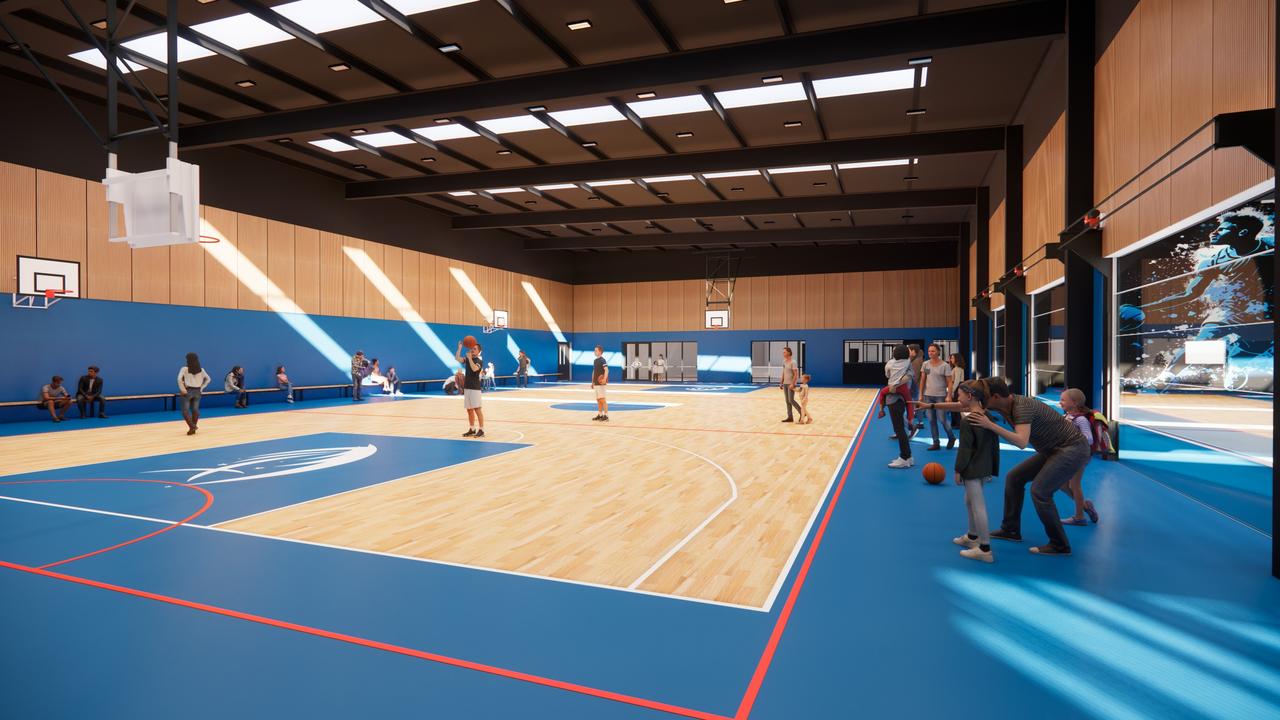Adelaide to lose hundreds of army personnel but gain missile base
Adelaide will lose hundreds of army personnel as part of a sweeping force restructure but regain numbers when long-range strike missiles are based at Edinburgh.

SA News
Don't miss out on the headlines from SA News. Followed categories will be added to My News.
Tanks, armoured personnel carriers and infantry will roll out of Adelaide as part of a major army restructure, slashing personnel numbers ahead of a missile base being established from 2025.
Defence Minister Richard Marles on Thursday will announce a sweeping army repositioning, under which Adelaide’s 1700-strong force will be cut by about 800 from 2025 as units move north to Brisbane, Townsville and Darwin.
The forces moving from the Edinburgh base, in Adelaide’s north, mostly will be from 7th Battalion, a mechanised infantry force, but also the 1st Armoured Regiment, which has M1 Abrams tanks and light armoured vehicles.
Adelaide is again expected to have 1700 army personnel by mid-2028, after about 900 positions are added over several years from 2025 as army long-range missiles are consolidated at Edinburgh.
Acting Chief of Army, Major General Richard Vagg, said Adelaide was an “ideal location” for a missile base, because of proximity to ranges at Woomera and Cultana, plus data from Edinburgh’s computer systems. The mobile missiles could be deployed across Australia by aircraft based at Edinburgh.
Mr Marles said the changes involved “some hard decisions” spurred by April’s landmark Defence Strategic Review, which recommended boosting northern bases.
Premier Peter Malinauskas said any immediate personnel reduction was “something that we approach with great caution”, insisting promises about reviving force numbers be kept, but welcomed the basing of hi-tech missiles.
Opposition Senate Leader Simon Birmingham urged Defence to clearly explain why troops redeployed to Adelaide little more than a decade ago to be able to train away from tropical weather extremes were now being sent north again.
A new “Fires Brigade” will be raised in Adelaide from next year to introduce and operate long-range missiles, plus land-based maritime strike, air and missile-defence systems.

This will involve the High Mobility Artillery Rocket System (HIMARS), which has been an important weapon for Ukraine fighting Russia’s invasion, and the National Advanced Surface-to-Air Missile System (NASAMS).
The 1st Armoured Regiment will be restructured as an experimental unit, helping accelerate new and emerging technology for soldiers through proximity to Adelaide’s defence science, industry and space sectors.
The 9th brigade, which last October was celebrated as the army’s “first truly integrated combat brigade”, will switch from an armoured combat role to a security and response force.
Mr Marles, also the Deputy Prime Minister, said the changes were about maintaining “peace, security and prosperity in our region”.
“Our army has always played a vital role in the defence of our nation and will continue to do so as it adapts to the challenges of our times,” he said.

“These changes involve some hard decisions. But these decisions are necessary to build the army Australia needs.
“This will mean army has a concentration of people and capabilities in Australia’s north, making it easier to deploy for training, major exercises or to support our partners and allies in the region.”
Mr Malinauskas said SA had argued for naval shipbuilding in the national interest, securing the $368bn nuclear-powered submarine construction, so army repositioning in the national interest was difficult to argue against.
But he highlighted the return of army personnel from 2025 onwards, pointedly labelling as “striking” that the federal government would have to honour this commitment when facing voters at an election.
“The prospect, though, of having the HIMARS rocket system and that type of technology based here, and also pilot programs being tested here, we see as being advantageous and consistent with what we want to do with defence industry and the state’s economic advancement in any event,” Mr Malinauskas told The Advertiser.
“We aspire to not just be the defence state, but the defence state in an advanced manufacturing context, which is exactly what this move speaks to.”
In a calculated message to Mr Marles ahead of a naval surface fleet review shaping the future of the $45bn future frigate construction project at Osborne Naval Shipyard, Mr Malinauskas said the clock was ticking.
“It’s our state government’s firm hope and expectation that we hear a positive affirmation of the frigate program so we can get on with the job of employing South Australians on that important piece of work, which is going to see another 2000 people employed at Osborne before we even start the submarines,” he said.
Senator Birmingham said South Australians were sufficiently mature to understand the national interest in changing defence strategy and deploying resources where they were needed.
But he said Defence needed to explain why troops were being moved north from Adelaide when they had been moved there for better training opportunities.
“I think it’s got to be very clear from Defence as to what’s changed in that regard and how they are going to make sure they’re achieving those outcomes for our national defence to be able to have those troops back up north,” he told ABC Radio Adelaide.
Senator Birmingham vowed to scrutinise in Senate estimates the promised rebuild of Adelaide troop numbers.
“I’m surprised, in some ways, to hear that the same numbers of personnel will be required as those who are leaving Adelaide and South Australians, of course, will be concerned that it’s not just the personnel who move and leave, but it’s families, it’s children,” he said.
More Coverage
Originally published as Adelaide to lose hundreds of army personnel but gain missile base









